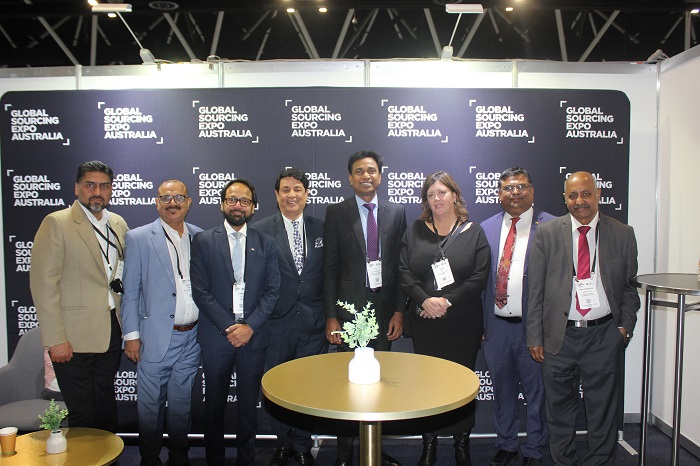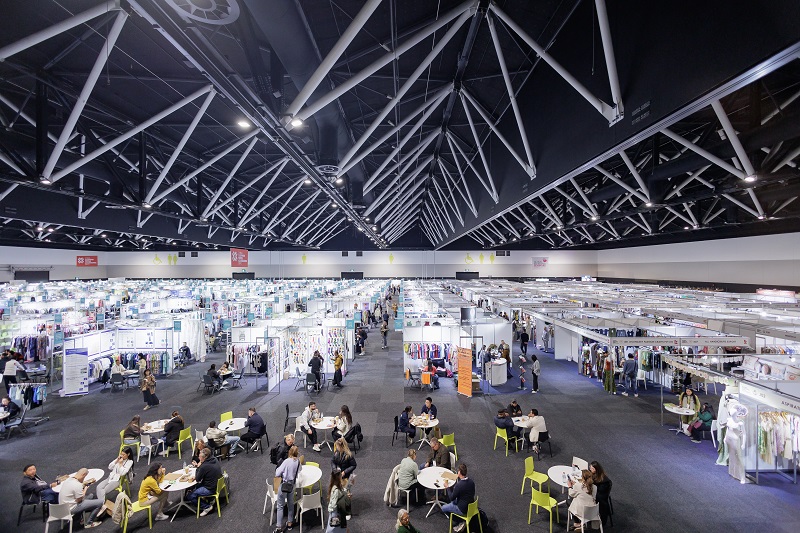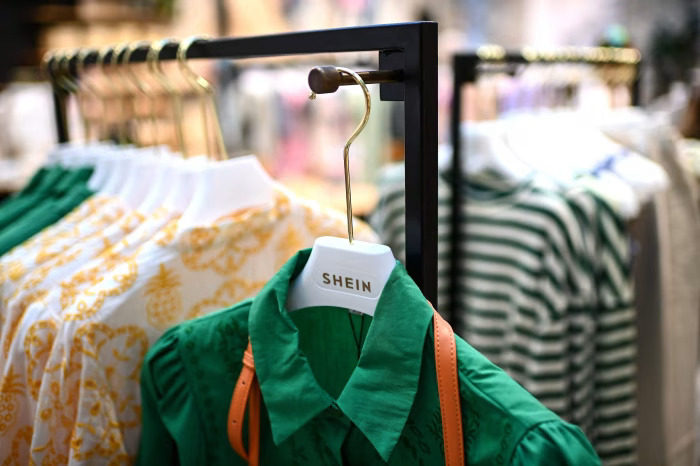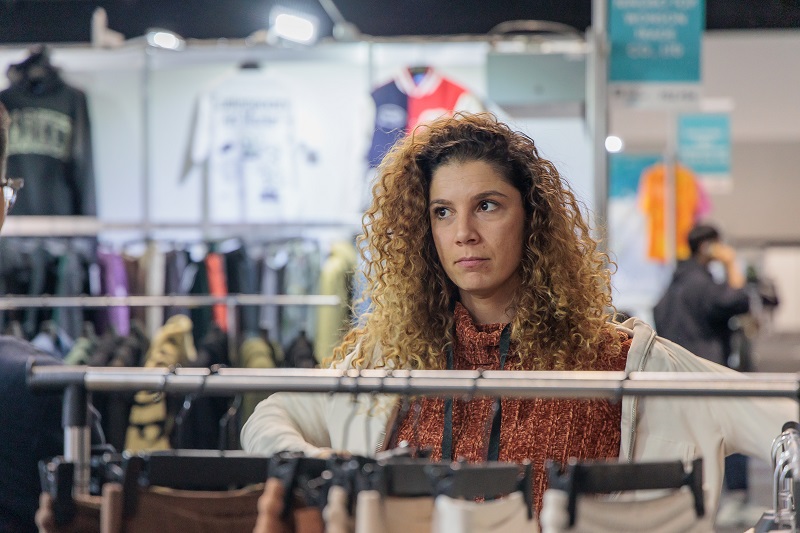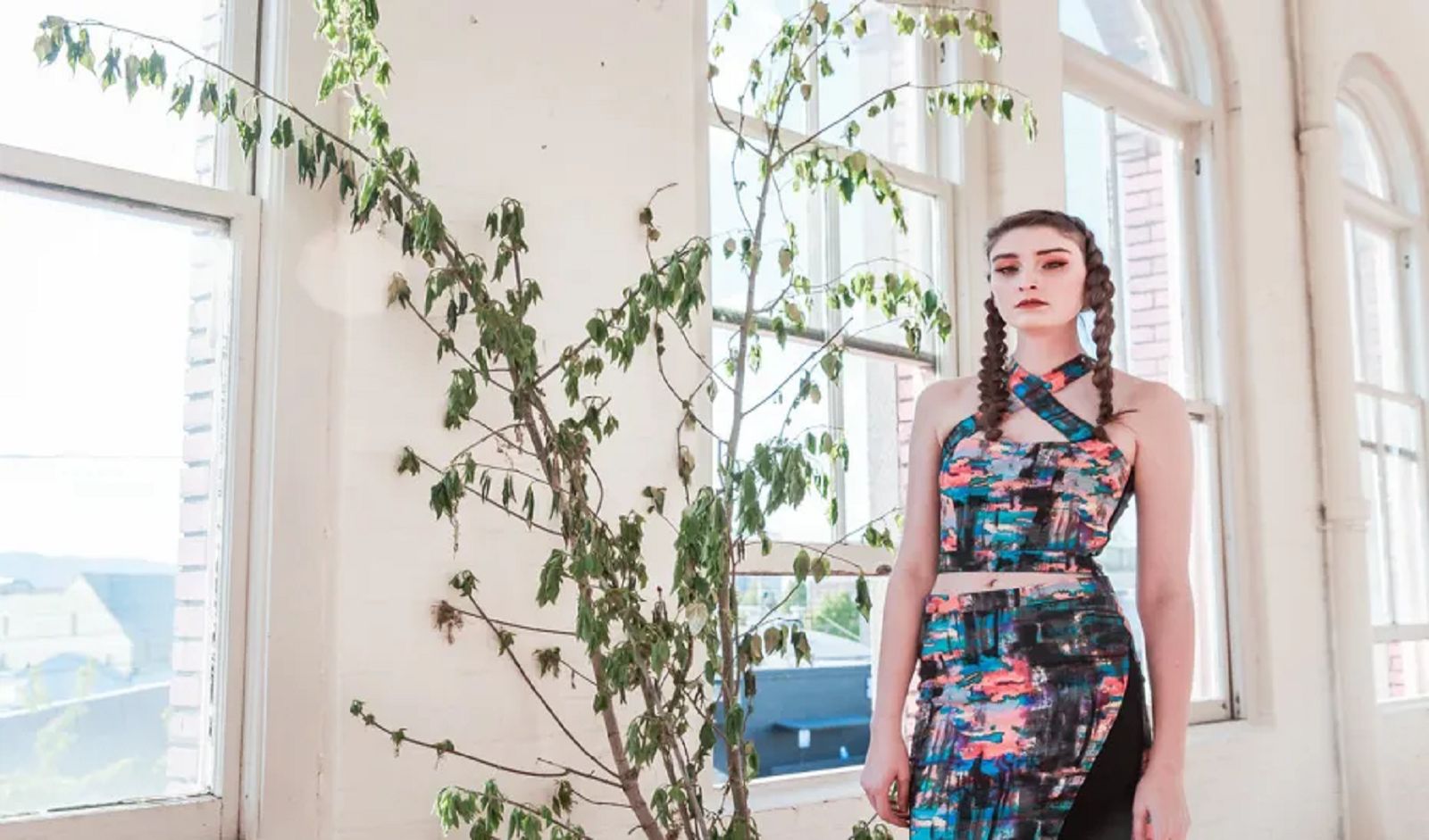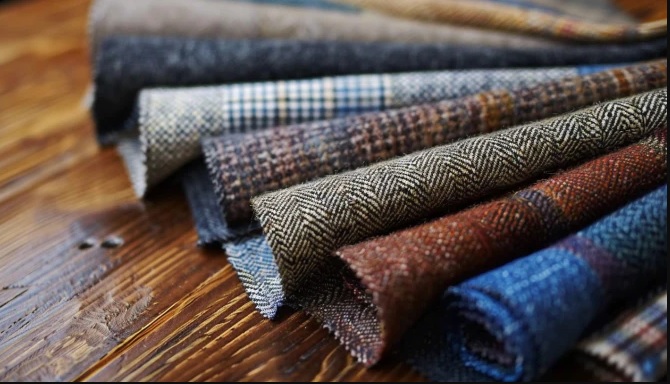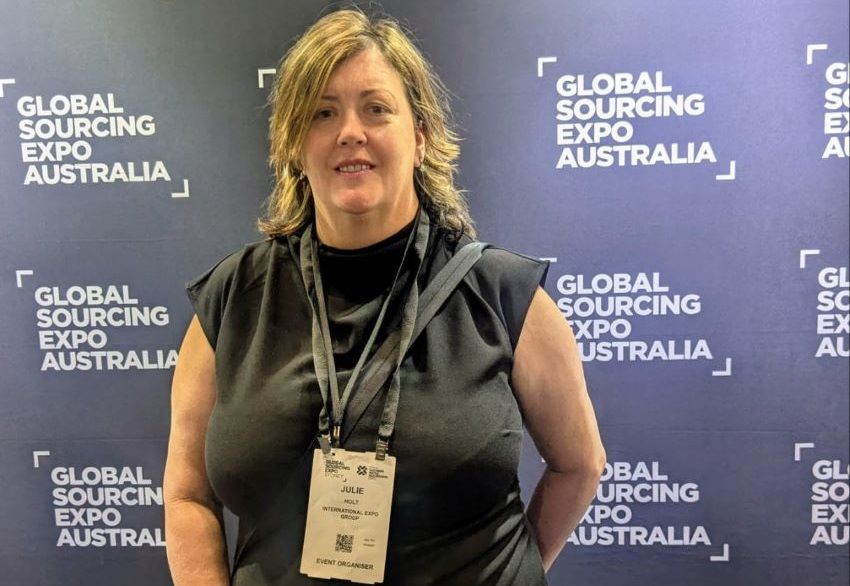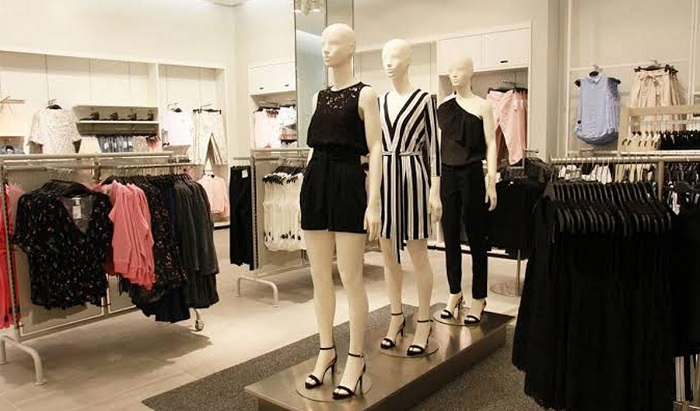FW
The US administration has informed Jordanian government that garment products from the country will now be allowed into the US markets on a larger scale than before. The US Department of Labour recently lifted restraints on the industry, the Jordan News Agency, Petra reported. The letter, received by the government late last month, said that Jordan was not listed among countries that violate international anti-human trafficking laws and allow child labour. In a separate letter, the US Department of Labour has recently lauded Jordan’s efforts to address child labour through continued field inspections, Petra reported. Credit was given to the government’s measures that included developing legislations to regulate labour and protect the rights of workers according to international rules.
The US law blacklists products of any country that uses children or forced labour. The government has taken several measures in association with the International Labour Organisation and Tamkeen Organisation, a local NGO and intensified inspection campaigns on violating industries to ensure their commitment to the rules, including the provision of a sound and healthy environment with appropriate wages and a set working hours. The Jordanian government is seeking alternative market for Jordanian products such as the US market which receives 21 per cent of the Jordanian exports.
A number of brands and suppliers from across the textile industry in the United Kingdom have pledged to the Responsible Wool Standard (RWS), says Textile Exchange (TE), a non-profit organization. The TE announced the release of the new RWS voluntary standard this summer.
The 15 brands that have made commitments to the Responsible Wool Standard include: H&M, Marks & Spencer, William-Sonoma, Inc., Patagonia, Eddie Bauer, REI, Eileen Fisher, Tchibo, Varner, Vaude, Coyuchi, Mountain Equipment Co-op, Deckers, Kathmandu and Knowledge Cotton Apparel. Many wool suppliers have expressed their individual commitment to the Responsible Wool Standard. They are : Rambler’s Way, Imperial Stock Ranch, New Merino Australia, Oviz 21, Chargeurs, ABMT Textiles, Lanas Trinidad and Lemprière. Several other wool suppliers have participated in global training events with a focus on setting up an RWS supply chain.
Besides, 10 additional companies have expressed support for the standard and are working toward implementation, Textile Exchange reports. These include LL Bean, Arc’teryx, Indigenous Designs, Nau, Point6 and Prana.
The RWS is an independent, voluntary standard. On farms, the certification aims to ensure that sheep are treated with respect to their five freedoms and the best practices in the management and protection of the land are adhered to. Through the processing stages, certification ensures that wool from certified farms is properly identified and tracked.
BRICS countries (Brazil, Russia, India, China, South Africa) are having a trade fair in New Delhi, October 12 to 14, 2016. This is their first such trade fair. There is a strong feeling that measures need to be taken to deepen intra-BRICS economic engagement, trade and investment ties. India is the chair for 2016 BRICS group of emerging economies.
The trade fair will showcase about 20 key sectors. These include aerospace, agro-processing, auto and auto components, chemicals, green energy and renewables, healthcare and pharmaceuticals, railways, textiles and apparel, infrastructure, IT, engineering goods, tourism, gems and jewelry and skill development. The fair will be a platform for BRICS countries to exhibit state of the art technologies and advances made in industrial development. The fair is being staged just ahead of the BRICS political summit in Goa, October 15 to 16, 2016.
Global merchandise exports of BRICS countries have gone up from $3.2 trillion in 2012 to $3.47 trillion in 2014. Merchandise imports from the world into BRICS nations have gone up from $2.95 trillion in 2012 to $3.03 trillion in 2014. In 2012, intra-BRICS trade stood at $281.4 billion and this increased to $297 billion in 2014.
With the hatching of more than 40,000 silkworms, Kraig Biocraft Laboratories, a leading developer of spider silk based fibres, has successfully launched production at its new Indiana production facility. The company is now on schedule to produce all of the recombinant spider silk necessary to fulfill its contract with the US Government on time and in the set budget.
The company has a large inventory of silkworm eggs ready to hatch. In the coming weeks, the company plans to ramp up the hatch rate. Kraig Biocraft Laboratories’ COO Jon Rice says the first batch of 40,000 silkworms were just the beginning of the company’s aggressive plans to scale up domestic production. With this facility, the company now has the capability to rapidly respond to the numerous request that it receives for its Dragon Silk.
In months to come, the company will be increasing the throughput of new facility. Then it will prepare for an expanded US operation which will include the planting of thousands of mulberry trees in addition to its new domestic plant.
It is important to note the company received a contract worth $1 million from the US Army for the development of high performance fibres for protective apparel applications this summer. Under the fully funded base effort valued at $99,962, the company was contracted to deliver ballistic shoot packs constructed from its proprietary Dragon Silk material for performance testing. Kraig Biocraft Laboratories, a fully reporting biotechnology company is a leading developer of genetically engineered spider silk based fibre.
Three big companies namely H&M, IndustriALL and IF Metall have converted Global Framework Agreement into a permanent collaboration. All the signatories share the belief that collaboration and a well-functioning dialogue between the parties on labour market is necessary for lasting improvements for garment workers in all working conditions. These include fair living wages, also for stable production markets, and in the end; a mature textile industry. The goal of the work is improved industrial relations where the freedom of association is respected, where workers’ representatives have a voice and where trade unions can negotiate collectively.
The collaboration within the Global Framework Agreement has led to several positive results. National monitoring committees – consisting of representatives of IndustriALL’s affiliated trade unions and H&M have been set up and trained in Bangladesh, Cambodia, Indonesia, Myanmar and Turkey. The committees support employers’ and workers’ organisations to negotiate and to solve conflicts peacefully and in good faith at the factory level. Their work contributes to functioning labour markets in the countries where H&M source its products.
Thanks to the collaboration within the Global Framework Agreement, several cases have been solved for example a conflict at a textile factory in Myanmar earlier this year which started mainly due to misunderstandings and a lack of communication between management and employees. The conflict resulted in strikes and at a later stage also a dismissal of employees. However, after negations initiated and organized by IndustriALL and H&M, all employees were rehired and a union was launched that allowed the factory to take steps towards sound industrial relations and a reduced risk of future misunderstandings and conflicts.
Support to factory level unions within the supply chain of H&M has been one key objective of the GFA between IndustriALL Global Union and H&M. Moreover, during the first year of the implementation process, there have been several new factory level unions registered.
The apparel industry touches almost each and every environmental topic viz climate change, limited resources, lost biodiversity and water scarcity. And Intertextile Shanghai Apparel Fabrics has, all along, been striving to keep these issues at the forefront of people’s thinking.
Particularly in China, sustainability is gaining importance with the government announcing it will strive to promote clean industrial production, low-carbon development and energy conservation to ensure sustainable growth over the next five years. According to proposals released by the government in its 13th Five-Year Plan (2016-20), traditional manufacturing will be steered along an environmentally friendly path, a low-carbon production system will be established and businesses will be encouraged to upgrade their technology.
All this shows that sustainability has been and will continue to be one of the biggest topics in the global apparel textile industry. Continuing to cater to the industry’s ever-growing demand for sustainability products and services, the ‘All About Sustainability’ zone is returning to Intertextile Shanghai with a 10 per cent increase in scale compared to the 2015 Autumn Edition.
Recently, OEKO-TEX launched a new certification system called ‘Sustainable Textile Production (STeP). This certification system is for brands, retail companies and manufacturers within the textile chains that want to communicate their path to more sustainable production conditions to the public in a transparent and credible manner.
Throughout the three-day fair, numerous seminars and panel discussions will be held to offer an interactive platform for sustainability experts to share their unique insights. Amongst these events is a panel discussion titled ‘Holistic Sustainability Performance Measurement: The Higg Index Driving Transparency & Continuous Improvement’. The panel discussion would be held on October 11 at the Forum Space area in All About Sustainability. It will be moderated by Scott Miller, Business Development Director of SAC, and the two panellists Peter Bartsch, Lenzing AG’s Head of Global Sustainability, and Peter Yang, Sustainability Supply Chain Manager of H&M.
The Tirupur Exporters Association (TEA) is set to constitute a special task force to achieve overall turnover of Rs one lakh crore from the Tirupur knitwear cluster by 2020 that would include exports and domestic sales. Disclosing details, association general secretary T R Vijayakumar said the task force would include exporters, bankers, technocrats, industrial consultants and a few other stakeholders. He also said they were planning to liaison with the Union and state governments to speed up the infrastructure development works listed in the road map, which the textile industry here prepared and submitted to the governments.
The immediate needs of the cluster include: development of ring roads to quicken transportation of garment consignments bound for foreign destinations to various sea ports, creation of affordable housing facilities for the predominant migrant labour force in the knitwear sector, uninterrupted power supply, effective effluent treatment facilities and softer bank loans, among few others.
Another major aspect which the exporters here plan to talk to the government would be steps to reduce the delays happening in Walayar check post so that exporters could use the Kochi port too instead of heavily depending on Thoothukudi port for dispatching apparels. Presently, almost 75 per cent of the apparels are sent through Thoothukudi port as delays in Walayar check post is a major deterrent when it comes to sending goods at the eleventh hour.
Turkey has made headway in cotton production. Availability of high quality seeds, an increase in number of harvesters and good farming practices has facilitated higher yields. Turkey became part of the Better Cotton Initiative three years ago. Turkish mills have been investing in new machinery and technology to increase quality and lower costs in order to get ahead in the very competitive international textile trade.
In 2015, domestic cotton consumption was about 1.47 million metric tons in spite of the lower textile exports. War conditions in Syria, Iraq and Ukraine, and the end of exports to Russia after the Turkish downing of a Russian plane in November 2015 resulted in a decline to these destinations. In the meantime, mills had to lower their margins to keep their market share in the European market to continue operating.
During the first 10 months of 2015 Bangladesh and Greece were the leading foreign destinations for Turkish cotton. Turkey also exported about 70,000 bales of hydrophilic cotton for medical use during the same period. Domestic consumption is expected to go up, even though marginally, during 2016 due to recent initiatives to improve relations with Russia and regional countries. Also, textile exports to Europe are expected to grow due to relative growth in the economies of the region.
"The entire value chain of clothing industry needs to dramatically shift gears to make it sustainable. Contrary to what is proclaimed by global brands, companies are still deploying production processes that are far from sustainable. A look at the startling statistics: In the US, 80 billion pieces of clothing are now purchased each year, 400 per cent more than two decades ago. The average American throws away 82 pounds of textile waste a year, mounting up to 11 million ton in the US alone."

The entire value chain of clothing industry needs to dramatically shift gears to make it sustainable. Contrary to what is proclaimed by global brands, companies are still deploying production processes that are far from sustainable. A look at the startling statistics: In the US, 80 billion pieces of clothing are now purchased each year, 400 per cent more than two decades ago. The average American throws away 82 pounds of textile waste a year, mounting up to 11 million ton in the US alone. In the UK, domestic clothing consumption has increased from one million ton in 2010 to 1.1 million in 2015, with England and Wales sending an estimated 620,000 ton to landfill (2013-14), worth an estimated £140 million, reveal WRAP’s ‘Textiles Market Situation Report’. Moreover, the average household owns around £4,000 worth of clothes, nearly a third of which hasn’t been worn for at least a year, meaning that UK consumers are hanging on to roughly £30 billion of unworn clothes, according to WRAP’s 2012 ‘Valuing Our Clothes’ report.
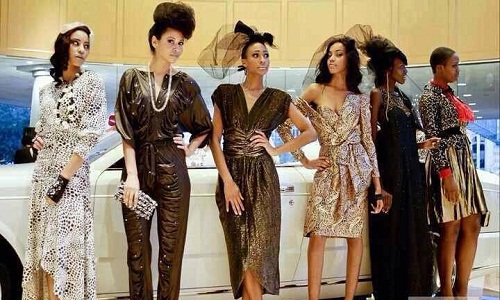
As per the WRAP report, textiles accounted for five per cent of UK’s total carbon and water footprint. Textiles manufacturing around the world (and mostly in developing countries) requires vast amounts of natural resources (1kg of cotton requires 20,000 litres of water), and often results in hazardous gases, pesticides & dyes being released into the environment.
New green initiatives
Indeed global associations are coming up with alternatives to reduce impact. Sustainable Clothing Action Plan (SCAP) by WRAP is among them, an initiative to ‘improve the sustainability of clothing across its lifecycle’. The signatories, representing 65 per cent of clothes sold in the UK by volume and 54 per cent by sales value, have committed to reducing carbon, water and waste to landfill per ton of clothing by 15 per cent by 2020, as well as reducing waste arising over the whole product lifecycle by 3.5 per cent. In November 2015, WRAP announced signatories have achieved reductions of 12.5 per cent for water and 3.5 per cent for carbon. A key part of SCAP’s work is focused on designs for longevity. WRAP says extending the active use of clothes by just nine months would reduce carbon, water and waste footprints by around 20-30 per cent each and cut resource costs by £5 billion.
Action plan for sustainable paradigms
While organic cotton and recycled polyester are widely known to be better for environment, there are plenty of other textile technologies that could lessen clothing’s impact. Traditional viscose manufacture, for instance, is currently in decline because of the high environmental costs. A few other manmade cellulosic fibres are coming to the fore, including lyocell, predominantly manufactured in Austria by Lenzig under the brand name Tencel. The process sees fast-growing Eucalyptus trees, grown on low-value land in South Africa, pulped with a recyclable solvent in a process that creates little waste, unlike traditional viscose manufacturing. Monocel, produced by Norwegian firm Nånkåtån, sees bamboo undergo a similar treatment to create another more sustainable viscose alternative.
Low-impact dyes is another important contributor. While environmental impact of dyeing depends on the type of dye, type of material, and application method, dyeing can be a polluting process, with the industry employing more than 8,000 chemicals, and requiring between 30 and 50 liters of water per kg of textile produced. Therefore, textile dyes need to be environmentally-friendly. Low-impact dye produced by AVITERA®, for instance, for use on cellulosic fibres (cotton, for the most part), can be used by conventional mills and reportedly requires 50 per cent less water and reduces CO2 emissions by 50 per cent or more during the dyeing and washing off processes, whilst also reducing processing time.
Huntsman company that manufactures chemicals says, if the entire world’s reactive dyed cotton was processed with AVITERA® SE, this could save more than 820 billion liters of water per year, equating to 1.3 liters of fresh water per person per day for the major textile processing countries like India, Bangladesh and China.
While not necessarily a technical innovation, changing consumer habits too need attention if fashion is to become sustainable. Consumption pattern need to undergo a dramatic shift. The lend-lease business model – part of the burgeoning sharing economy – is one that could certainly be expanded. There are examples such as Rentez-Vous in the UK, which bills itself as a ‘guilt-free unlimited wardrobe’, where users can list items of clothing that others can then rent for a set price and period of time. MUD Jeans, based in the Netherlands, has customers leasing jeans for life.
Some designers are working towards flexible single items of clothing. For example, Polish label Blessus creates modular constructions that allow customers to mix, match, or swap components using a series of concealed zippers to add or subtract pieces of fabric. Others are designing for disassembly (a wide known term in electronics), including Dutch companies Refinity and Dutchspririt, which have come up with the concept for a raincoat that can be disassembled for its components/materials after its first life. Refinity has also experimented with modular ‘fragment textiles’ that can be clicked together in various formations and removable prints that ‘combine short (fashion) cycles with long raw material cycles’. None of these are widely available.
China is now the second largest jeans market in the world where consumers’ affinity towards denim grew from 39 per cent in 2003 to 63 per cent in 2016, reveals a survey by Cotton Council International (CCI) and Cotton Incorporated’s 2016 Global Lifestyle Monitor shows. This has attracted many denim suppliers to partake in upcoming Intertextile Shanghai Apparel Fabrics – Autumn Edition 2016 to be held from October 11 to 13. Nearly 170 domestic and overseas exhibitors will showcase their newest denim collections.
Featuring five co-exhibitors, the new Lycra Moves Denim Pavilion by Invista will offer an interactive demonstration of its denim technologies including Lycra dualfx, Lycra Beauty and Coolmax as well as the latest Thermolite IR technology. Also hosted by Invista would be a panel discussion ‘Adding Value to Denim: Why this is a win for consumers and retailers’ to be held on October 12 at the new seminar area. The discussion will be moderated by fashion media Inside Fashion’s editorial director Jane Singer where four panelists will share their insights on different topics, like Consumer Insights, Evolution of Performance Denim, The Future of Denim, Stretch leads the trend, technology enhances performance. Intertextile Shanghai Apparel Fabrics – Autumn Edition 2016 is being co-organised by Messe Frankfurt (HK) Ltd., the Sub-Council of Textile Industry, CCPIT and the China Textile Information Centre.


